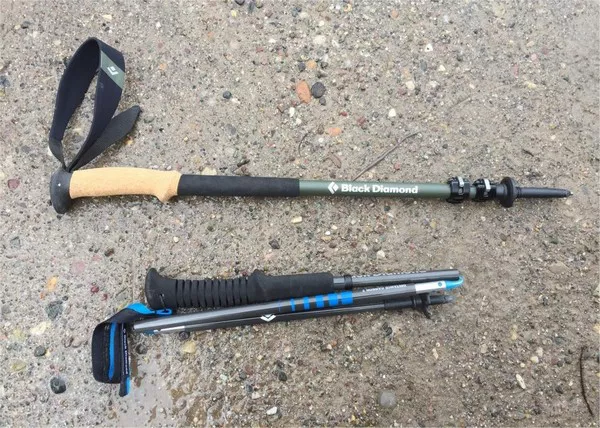Trekking poles are indispensable companions for outdoor enthusiasts, providing stability, reducing strain on joints, and enhancing overall endurance during long hikes or mountain adventures. Among the myriad options available, alpine carbon cork trekking poles stand out for their blend of lightweight construction, durability, and ergonomic design. In this article, we delve into the features, benefits, and considerations of these high-performance trekking poles to help you make an informed choice for your next outdoor excursion.
Why Choose Alpine Carbon Cork Trekking Poles?
Alpine carbon cork trekking poles are designed with the specific needs of serious hikers, backpackers, and mountaineers in mind. Here’s why they are worth considering:
1. Lightweight Construction: These poles are typically crafted from carbon fiber, a material known for its exceptional strength-to-weight ratio. This ensures that the poles are lightweight yet robust enough to withstand rugged terrains.
2. Comfortable Cork Grips: The handles of these poles are made from cork, which is not only lightweight but also absorbs sweat and conforms comfortably to your hand over time. This ergonomic grip reduces fatigue and provides a more natural feel compared to rubber or foam handles.
3. Adjustability: Most alpine carbon cork trekking poles come with adjustable length features, allowing you to customize the height according to the terrain or your comfort. This adaptability is particularly useful when ascending or descending steep slopes.
4. Shock Absorption: Many models incorporate internal springs or elastomers in the shafts to dampen the impact with each stride. This feature helps reduce strain on your wrists and shoulders, especially during extended treks on hard surfaces.
5. Durability: Carbon fiber is not only lightweight but also highly durable. Alpine carbon cork trekking poles are built to withstand frequent use in rugged conditions without compromising performance.
Features to Look For
When selecting alpine carbon cork trekking poles, consider the following key features:
1. Shaft Material: Opt for poles with high-quality carbon fiber shafts for the best balance between weight and durability.
2. Grip Design: Look for ergonomic cork grips with extended handles for multiple grip positions, allowing you to adjust your hold based on the terrain.
3. Adjustment Mechanism: Choose poles with reliable locking mechanisms (e.g., lever locks or twist locks) that securely hold the adjusted length in place.
4. Basket Size: Check the size of the baskets—larger baskets are ideal for snowy or loose terrain, while smaller ones are suitable for trails with packed dirt.
5. Shock Absorption: Consider models with effective shock absorption systems if you anticipate trekking on hard surfaces or rocky trails.
6. Weight: Compare the weight of different models, aiming for a balance between lightness and durability based on your trekking style and preferences.
Benefits of Alpine Carbon Cork Trekking Poles
Integrating alpine carbon cork trekking poles into your outdoor adventures offers numerous advantages:
1. Reduced Impact: Trekking poles help distribute weight more evenly, reducing strain on your legs, knees, and ankles, especially when carrying heavy packs.
2. Improved Stability: By providing additional points of contact with the ground, poles enhance balance and stability on uneven terrain or slippery surfaces.
3. Increased Endurance: Using trekking poles can help conserve energy by engaging the upper body, allowing you to trek farther and longer with less fatigue.
4. Versatility: These poles are suitable for a wide range of outdoor activities, including hiking, backpacking, trail running, and snowshoeing.
Tips for Using Alpine Carbon Cork Trekking Poles
To maximize the benefits of your trekking poles, follow these tips:
1. Proper Length Adjustment: Adjust the poles so that your elbows are at a 90-degree angle when holding the grips with the tips touching the ground.
2. Use Wrist Straps: Utilize the wrist straps to take some of the weight off your hands while maintaining a secure grip on the poles.
3. Master the Technique: Learn and practice proper pole technique, including planting the poles firmly and rhythmically to propel yourself forward.
4. Maintain and Inspect Regularly: Check your poles for any signs of wear or damage before each use, and clean them as recommended by the manufacturer.
5. Carry Spare Parts: Consider carrying extra tips and baskets, especially for longer expeditions or in challenging environments.
Conclusion
Alpine carbon cork trekking poles are essential gear for outdoor enthusiasts seeking enhanced stability, endurance, and comfort during their adventures. With their lightweight yet durable construction, ergonomic cork grips, and adjustable features, these poles offer a superior trekking experience across diverse terrains. By investing in high-quality trekking poles and mastering the techniques of pole-assisted hiking, you can elevate your outdoor journeys and make the most of every step along the trail. Choose wisely, adventure boldly, and let alpine carbon cork trekking poles be your trusted companions on the path less traveled.

